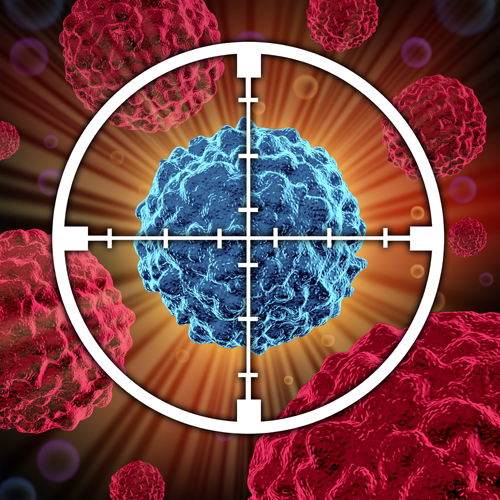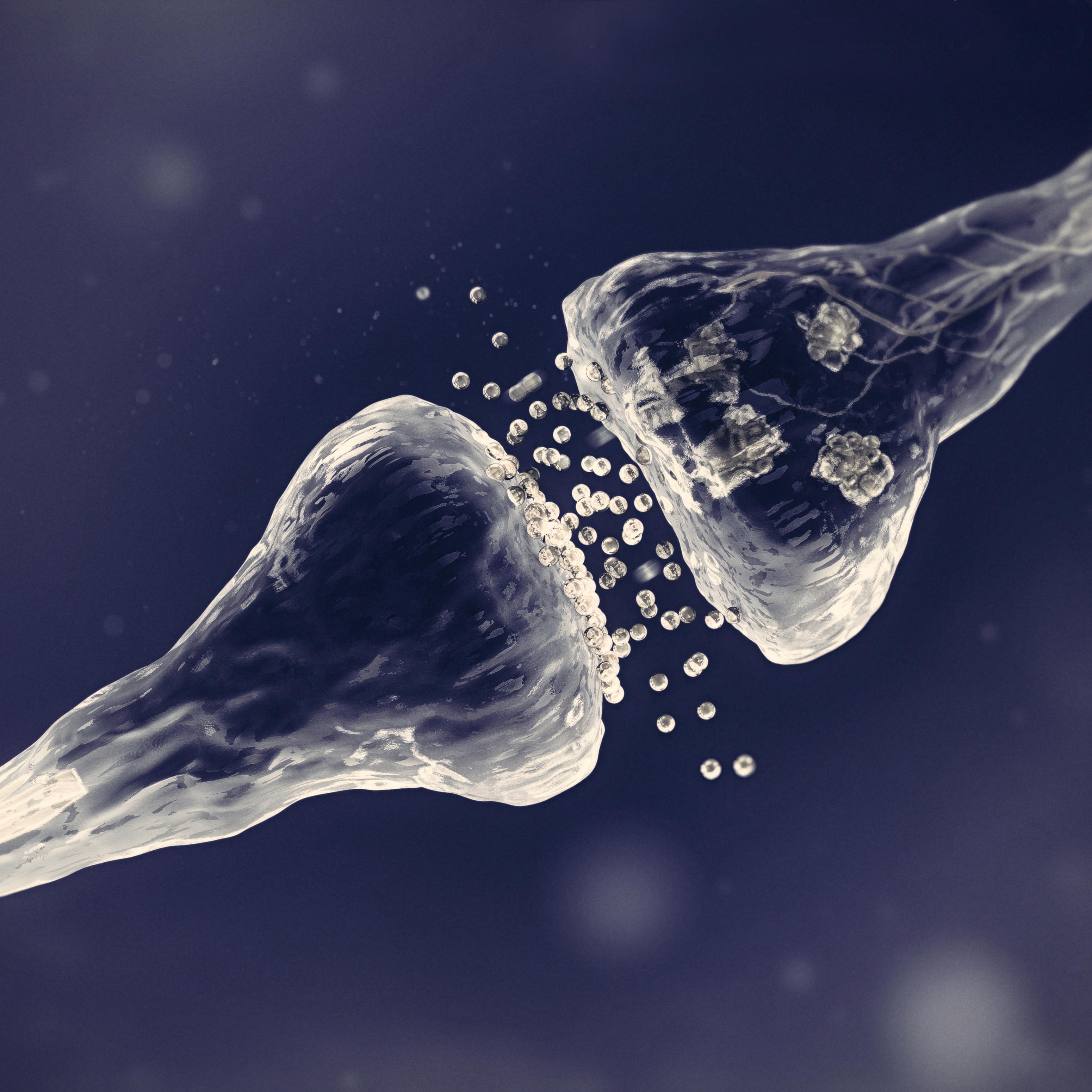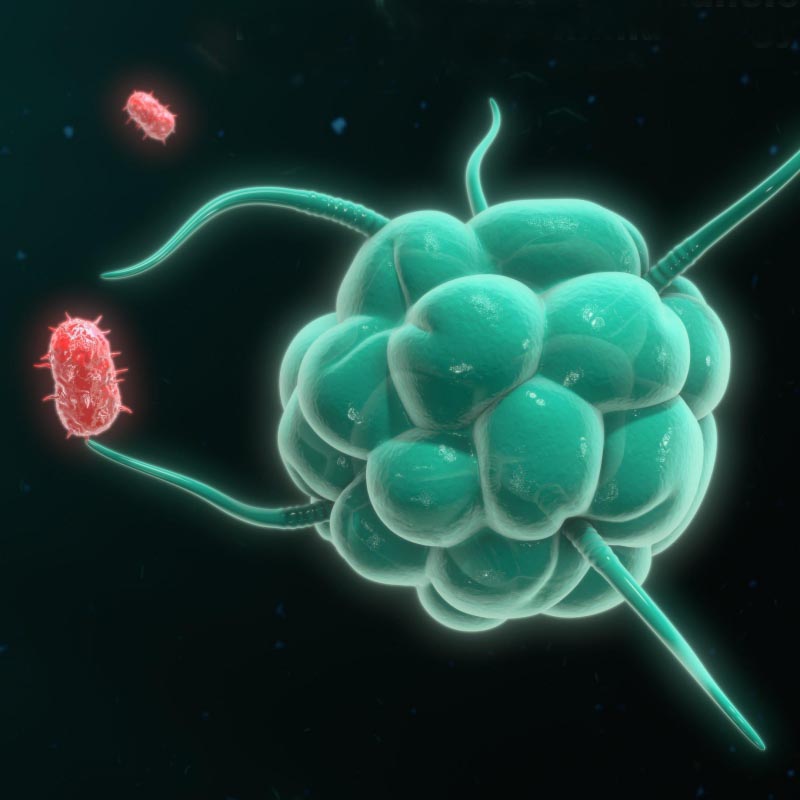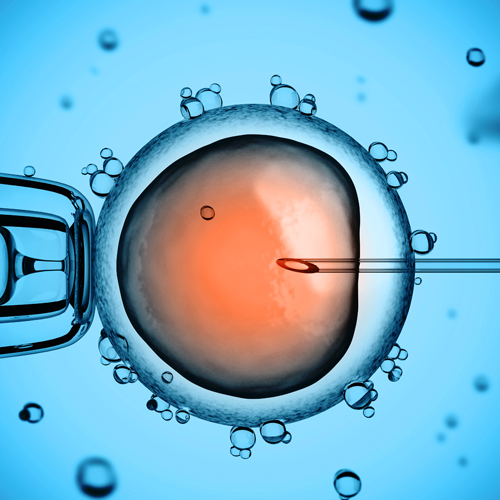Researchers studying the molecular basis of muscle diseases focus on the development, pathophysiology, pre-clinical studies to test/validate novel therapeutic approaches of targeted diseases such as amyotrophic lateral sclerosis (ALS), spinal muscular atrophy (SMA), myasthenia gravis and disorders of neuromuscular transmission, muscle diseases such as myotonic (DM1) and Duchenne muscular dystrophy (DMD), channelopathies and inflammatory myopathies.

Molecular basis of neuromuscular diseases and myopathies
Researchers
Jean-Marc Renaud
Everyone has felt the effect of fatigue in our muscle when we do exercise. For more than a century scientists have tried to elucidate the mechanisms of muscle fatigue. For a long time, changes in metabolites, such as ATP, H + and lactate, were thought to reduce force production by the contractile components and thus be responsible for the decrease in force during fatigue. Surprisingly, recent studies have now demonstrated that neither ATP, H + nor lactate may be responsible for the decrease in force. Even more exciting is the fact that lactate and acidic pH may in fact protect muscle against the fatigue process! As a consequence of these new findings, we must now study how muscle contractility is regulated not only during fatigue but throughout the entire exercise process. This constitutes one of the major research projects in Dr. Renaud laboratory.
Mona Nemer
Studies in our laboratory are aimed at elucidating the molecular mechanisms involved in the spatial and temporal control of eukaryotic gene expression and cellular differentiation. We have focused our interest on the pathways underlying cardiac growth and differentiation. In order to elucidate the factors and mechanisms involved in the control of gene expression during normal and hypertrophic cardiac growth, we have used several cardiac genes as models. Our studies have led to the molecular cloning of novel cardiac transcription factors with a role in heart development. Various techniques of cellular and molecular biology are now used to analyze the function of those factors in initiating and maintaining the cardiac genetic program and in cardiogenesis.
Wenbin Liang
Dr. Liang’s research is focused on mechanistic studies of arrhythmogenic heart disease, with the hope of developing novel therapies for cardiac arrhythmias. Techniques used include somatic gene transfer, stem cells, cellular electrophysiology, organ culture, and whole-animal studies, as well as cellular and molecular biology techniques.
Bernard Jasmin
Dr. Jasmin research program focuses on deciphering the regulatory cascades and signaling pathways involved in controlling expression of synaptic proteins in both neuronal and skeletal muscle cells. In this work, the emphasis is placed on studying questions that are relevant for our understanding of the physiopathology and eventual treatment of various neuromuscular diseases and conditions such as Duchenne muscular dystrophy, myotonic dystrophy, skeletal muscle atrophy, and rhabdomyosarcoma. More recently, Dr. Jasmin has initiated studies to determine the impact of the skeletal muscle secretome on brain function in health and disease.
Dale Corbett
Dr. Corbett’s current research concerns recovery of sensory-motor and cognitive function following stroke. His lab uses a variety of approaches to enhance neuroplasticity and stroke recovery including novel forms of rehabilitation, exercise and mobilization of endogenous neural precursors and stem cells.
Dylan Burger
Dr. Burger’s research examines mechanisms involved in the pathogenesis of diabetic vascular and kidney disease. In particular, his research focuses on the role of microparticles in these processes. Microparticles are small (0.1-1.0μm) fragments of membrane that are shed from cells under conditions of stress or injury. Previous research from Dr. Burger and others has shown that microparticles may serve as biomarkers of underlying disease and that, once shed, exert deleterious biological effects on target cells.
Jocelyn Côté
Dr. Côté’s research focuses on the role of arginine methylation, a post-translational modification often harboured by RNA binding proteins, in the regulation of post-transcriptional mechanisms and how these novel molecular pathways are misregulated in human pathologies such as spinal muscular atrophy (a motor neuron disease), myotonic dystrophy, Duchenne Muscular Dystrophy and cancer. His research interests are currently divided between three broad axis: (i) investigating how arginine methylation of various RNA binding proteins regulates their function under physiological and pathological settings, (ii) the normal function and role in disease of Tudor domain-containing proteins, which serve as ‘readers’ and effectors of the arginine methylation mark, and (iii) the contribution of arginine methylation to cancer.
Nadine Wiper-Bergeron
The Wiper-Bergeron laboratory focuses on the transcriptional mechanisms that govern adult stem cell differentiation, specifically into muscle, bone and fat. Dr. WiperBergeron is also interested in the development and assessment of new learning tools for medical education.
Richard Hébert
Prostaglandins are produced by cyclooxygenases in the kidney and well-known, nonsteroidal, anti-inflammatory drugs, like ibupofen or Celecoxib, are inhibitors of this pathway. The mechanisms underlying the imbalance leading to retention of sodium and water in the body are not completely understood, but an important system responsible for the changes in collecting duct transport leading to hypertension is the renin-angiotensin-system (RAS). Current therapies for hypertension are aimed at blocking RAS. Angiotensin II is the main product of RAS in the collecting duct and it plays a major role in regulating salt transport. What is uncertain is how the collecting duct fails in balancing salt and water elimination to prevent hypertension. Since prostaglandins help maintain a balance in salt and water transport, they can be targeted to rectify the imbalance in transport due to high levels of Angiotensin II that lead to hypertension. We believe this research can introduce novel targets for the treatment of hypertension by using drugs that modify specific prostaglandin pathways in the collecting duct, and improve the lives of the millions of Canadians affected by hypertension.
Yan Burelle
Dr. Burelle aims to better understand the complex mechanisms linking mitochondrial biology to health and disease. Using basic research tools and models, and non-invasive translational approaches, his lab is focused on capturing the diversity and dynamics of mitochondrial (dys)functions in the context of skeletal muscles, cardiomyopathies, and genetic mitochondrial diseases. Tools are developed with the goal of improving translation of knowledge into clinical applications such as biomarkers that will serve to advance the diagnosis and monitoring of complex diseases
Kevin Burns
Dr. Burns’ research is focused on the function and regulation of the intrarenal renin-angiotensin system in diabetic nephropathy and hypertension. He is also looking at the role of RAS in chronic kidney disease progression, particularly ACE2, and in the pathogenesis and treatment of acute kidney injury (AKI).
Darryl Davis
The focus of Dr. Davis’ laboratory is to study the capabilities of both blood and heart stem cells to repair heart damage. While there is evidence that these approaches can heal damage, it is known that stem cells have difficulty engrafting and growing into new working heart tissue. Therefore, to address this pressing need, Dr. David works at developing techniques to surround cells in a protective cocoon prior to injection. His laboratory is also looking to increase indirect paracrine mediated repair and limiting the impact of variation in patient characteristics on cardiac stem cell regenerative performance.
Christopher Kennedy
Dr. Kennedy’s research program seeks to identify factors such as prostaglandins and reactive oxygen species responsible for mediating damage to cells within the kidney’s filtration barrier – known as podocytes. Such injury results in abnormal leakage of protein into the urine. Identifying the specific factors responsible for filtration barrier injury may reveal a novel therapeutic target for the prevention of glomerular diseases. Most recently, the work of Dr. Kennedy’s laboratory defined a critical role for a novel NADPH oxidase isoform (Nox5) in diabetic kidney disease.
Rashmi Kothary
Dr. Kothary’s research program is primarily focused on studying the fundamental role of a cytoskeletal linker protein important for intracellular trafficking, investigating extrinsic and intrinsic factors important for oligodendrocyte mediated myelination and remyelination of the CNS, and understanding Spinal muscular Atrophy pathogenesis and identifying novel therapeutics for this devastating children’s disease.
Frans Leenen
Dr. Leenen’s current areas of research are 1) brain mechanisms determining sympathetic hyperactivity in salt-sensitive hypertension and heart failure with a primary focus on the brain RAAS; and 2) genetic basis of salt-sensitive hypertension in rats and humans.
Peter Liu
20% of Canadians are affected by heart failure in their lifetime. Dr. Liu’s research is focused on the causes and treatment of heart failure from bench to bedside. His team is centered on the systematic discovery and validation of novel biomarkers and potential therapeutic targets for early identification and intervention of heart failure. They are particularly interested in novel innate immunity and inflammation regulators and pathways in cardiac remodeling and disease progression. Using system biology approaches combined with in vitro cardiomyocyte culture systems and in vivo transgenic mouse models, they have identified how viruses and bacteria can accelerate heart failure and coronary artery disease and are developing novel vaccines to prevent these complications.
Alex MacKenzie
Dr. MacKenzie and his team are developing a strategic toolbox and preclinical research pathway for inherited disorders and orphan diseases. His lab has identified a subset of genes linked to three disorders – Duchenne Muscular Dystrophy, Myotonic Dystrophy, and Spinal Muscular Atrophy – and the goal is to broaden the research to include other genetic disorders.
Johnny Ngsee
ALS is a progressive neurodegenerative disease caused by death of motor neurons. Cellular processes associated with familial ALS genes are diverse, suggesting the etiology is multifactorial involving multiple biological processes. Dr. Ngsee’s research program focuses on VAPB (VAMP-associated protein B), a gene mutated in an autosomal dominant, slow progressing form of ALS. His recent study showed that mutant VAPB blocks protein trafficking in a membrane compartment derived from the endoplasmic reticulum (ER) called the ER-Golgi intermediate compartment (ERGIC). Mutant VAPB primarily affects retrograde cargo transport from ERGIC. Nuclear envelope proteins also utilize this transport route and loss of VAPB disrupts their delivery that leads to progressive deterioration of the nuclear envelope. The goals are to define the cellular consequences of this nuclear envelope defect, characterize the biological processes affected by the defect at ERGIC that could contribute to motor neuron death, and explore treatment strategies that could mitigate the adverse effects of mutant VAPB.
Kyoung-Han Kim
Dr. Kim’s research program focuses on genetic and metabolic regulation of heart development, function and disease, with emphasis of obesity, diabetes and heart failure. First, we are interested in the molecular function/mechanism of the Iroquois (lrx) transcription factors in the heart, which are not only implicated in organ development, but also in energy homeostasis regulation. Second, we are investigating metabolism in the heart and its communications with other core metabolic tissues/organs (e.g. adipose tissue and liver). Using genetically engineered mice as our principal models, we integrate physiology with molecular and systems biology approaches to address the fundamental questions heart function and diseases.
Ruth McPherson
The goals of Dr. McPherson’s laboratory are to develop a comprehensive and integrated understanding of the genetic and molecular etiology of complex phenotypes, with a focus on coronary artery disease and obesity.
Alexander Sorisky
Dr. Sorisky’s laboratory studies cell-surface receptor signaling transduction in the context of adipose cell responses, such as differentiation, proliferation, survival, and adipokine production. His research group uses primary human adipose cell signal transduction networks, regulated by cell-surface tyrosine or G protein-coupled receptors, to study metabolic malfunction such as insulin resistance and inflammation. Through this line of inquiry, his lab aims to understand the molecular processes that link adipose tissue dysfunction with cardiovascular diseases and type 2 diabetes.
Thomas Lagace
Dr. Thomas Lagace directs the Liproprotein Receptor Biology Laboratory at the University of Ottawa Heart Institute. His laboratory studies mechanisms that affect cholesterol uptake and trafficking in cells with an emphasis on how these processes affect negative feedback control of cholesterol metabolism. He is particularly focusing on interactions between cell surface lipoprotein receptors and their ligands. His research program will help the development of novel therapeutic avenues to treat various cardiovascular diseases.
Jyh-Yeuan (Eric) Lee
Elevated plasma level of cholesterol is a risk factor to developing atherosclerosis, a leading cause of cardiovascular diseases such as heart attacks and strokes. Dr. Lee’s laboratory seeks to understand, at the structural level, the structure-function relationship of cholesterol efflux by ABC transporters. Dr. Lee’s laboratory uses structural biology, biophysics and membrane protein biochemistry approaches to i) elucidate the catalytic and the transport mechanisms of ABC sterol and lipid transporters, ii) characterize the specific role of ABC transporters in lipid transport and lipoprotein formation, iii) define the molecular events that can be targeted for pharmaceutical manipulation.
Erin Mulvihill
Over 25% of Canadians live with pre-T2DM or T2DM (>11 million patients) and this expanding population is at ever greater risk for heart disease causing a significant strain on health care resources. Dr. Mulvihill’s expertise in lipids and lipoproteins, models of diabetes and cardiovascular disease, intestinal biology and mouse genetics contribute to improving the understanding of the molecular events which contribute to metabolic and cardiovascular disease.
Mireille Ouimet
In atherosclerosis, fatty plaques build up in the artery wall, and Dr. Ouimet recently identified lipophagy as a novel pathway that degrades fat which accumulates in cells of atherosclerotic plaques (foam cells). Increasing foam cell lipophagy thus represents a novel strategy to prevent and reverse atherosclerotic plaques. Dr. Ouimet’s laboratory seeks to i) understand the fundamental mechanisms of autophagy-mediated lipid droplet degradation (lipophagy), ii) investigate its specific role in atherosclerosis and immunometabolism, and iii) define the molecular components of this pathway that can be specifically therapeutically manipulated.
Alexandre Stewart
Lowering cholesterol and blood pressure via current therapies markedly reduces the incidence of cardiac events. Known genetic variants for cardiovascular disease confer a similar risk burden as elevated cholesterol or blood pressure, but are independent of these risk factors, pointing to additional cellular pathways and potentially significant venues for intervention in CAD. Dr. Stewart’s research is directed at elucidating these mechanisms with the vision to devise new therapies to further improve prevention and outcomes. In particular, his research is focused on mechanisms of coronary artery calcification and regulation of the innate immune response.





